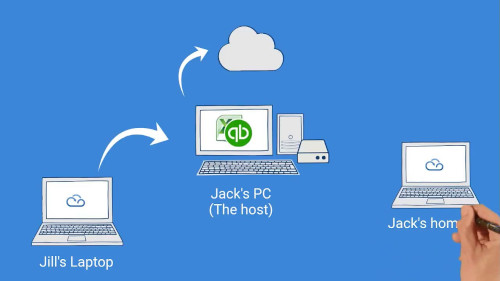Since March 2020, the terms flexible working schedule, remote working, work from home, and compressed workweeks have become buzzwords.
However, 70% of employees believe that flexible working hours make the job more attractive.
More and more employees are looking for work-life-balance. In fact, 55% of employees according to SHRM say work-life-balance hugely contributes to their job satisfaction.
Thanks to COVID-19, both employees and employers have had the experience of working remotely and see the benefits.
Companies too have realized that employees can work from anywhere and remain productive without having to spend money on real estate. And hosting meetings and training with people across the globe is no longer an issue. Now, remote work looks like a new normal.
What is work flexibility?
Work flexibility come in many shapes and form depending on the nature of the company and employee job functions.
Thanks to technology, barriers to flexible working have been broken down and now team collaboration transcends the physical offices. Now employees have enjoyed the freedom to choose when, where, and how to work.
With coronavirus, remote work and flexible locations have been the most popular forms of work flexibility. The concerns of productivity and team collaboration have been erased thanks to remote access and remote desktop solutions.
Also, video conferencing, screen sharing, online whiteboards have work flexibility the solution to business continuity.
What is employee wellbeing?
The reality is that we spend most of our waking time working. Therefore, focusing on employee wellbeing is a smart business strategy if you want to build a strong business.
Why? Because it is linked to employee engagement and satisfaction. All these terms are linked but they don’t refer to the same thing.
Employee wellbeing is “understanding your employees from a holistic perspective.” Taking care of their mental, physical, and social wellbeing. Basically, taking to account their overall quality of life.
The shift to remote work has brought huge disruption to the work environment. Employees are struggling with their mental state, keeping fit, and social isolation.
Employee wellbeing and engagement has never been more important like it is now.
A Work and Wellbeing Survey by The American Psychological Association showed that “More than a third of working Americans (35%) reported experiencing chronic work stress, and less than half said their employer provides sufficient resources to help employees manage their stress.”
And a recent study evidenced that 69% of employees claimed that this year has been the most stressful of their entire career. Employers now have to consider employee wellbeing to mitigate the consequences of the pandemic.
Organizations are looking for ways to cope and help their employees build resilience regardless of the situation.
Research by Gallup connecting employee wellbeing to employee engagement showed that companies that invest in employee wellbeing are: 45% more likely to account for high levels of adaptability in the occurrence of change, and 59% less likely to look for a job with a different organization in the next 12 months.
Benefits of flexibility to employee wellbeing
Reduce everyday commute
With remote work or flexible schedules, employees don’t have to make the daily commute to work. This cuts down the traffic stress and saves them time to do more productive work. They may opt to use that time to go for a walk, engage their kids, or simply wind down. Not forgetting it cuts down the carbon emissions too.
Improve work-life balance
Remote work has provided the flexibility employees need to manage their work and personal responsibilities. Work-life balance is the ability of employees to distribute their time well between personal and professional obligations.
Poor work-life balance negatively impacts an employee’s happiness and health. It makes one feel less in control of their lives and more stressed at work.
Most remote workers have cited work-life balance as their main reason to work remotely. They have structured their day in such a way that they work when they are most productive and get time to take care of their responsibilities outside of work. As a result, they are more productive and remain motivated to work better.
Less risk of burnout
It is very easy to move from one task to another losing track of time when sited in an office. In the office, taking a break might be an issue so you have no time to regroup and reflect.
Work flexibility allows you to plan for breaks, allowing your mind and brain to take a rest and work optimally. You can get outdoor, take a quick walk around the block, and come back refreshed to tackle another task. This leads to better decision making and improved information processing.
Also, encourage employees to make time for hobbies, exercises, or anything that makes them happy.
Increased happiness
Remote employees are less stressed, highly motivated, and more satisfied with their work, making them happier. Flexible schedules allow them to have time for self-acceptance, positive relations with others especially friends and family, purpose in life, environmental mastery, personal growth, and autonomy.
Workers are more enthusiastic and energized about their work and they are committed to it. Happier employees, happy customers, happy business.
As we have seen, there are many benefits of incorporating flexibility to our workplaces regardless of rank. Employee wellbeing is something to be considered for everyone from the CEO to the intern.
More job control and work-life balance are significant determinant factors to employees’ physical and mental wellbeing. And flexibility should be at the top of every workplace wellbeing initiative for a good reason.
Thanks to cloud technology solutions, work flexibility has never been easier and efficient. And the trend looks like it’s here to stay.





